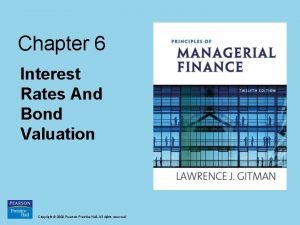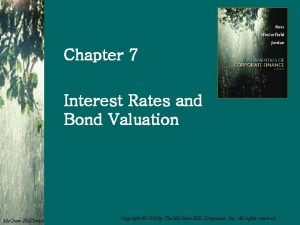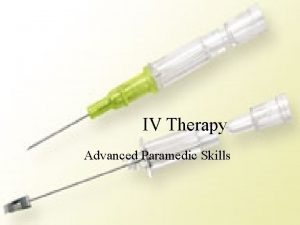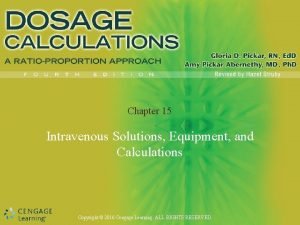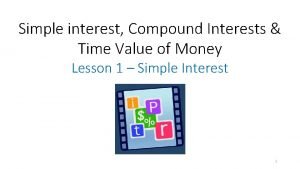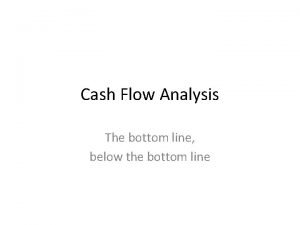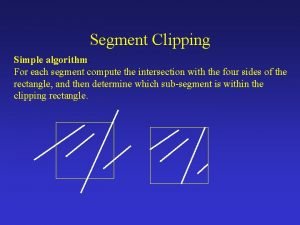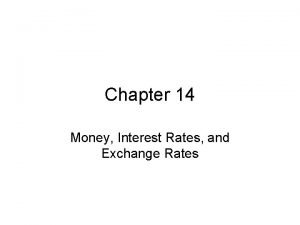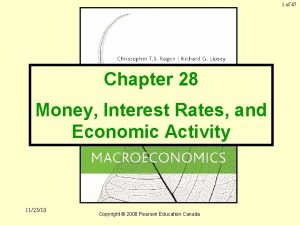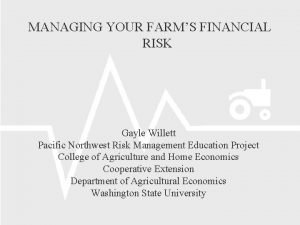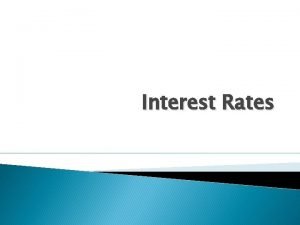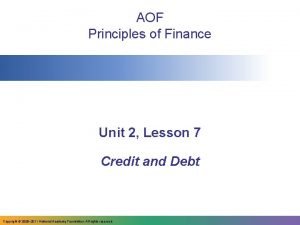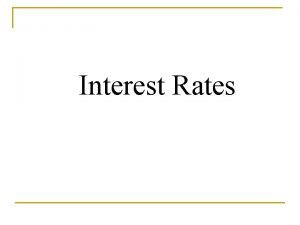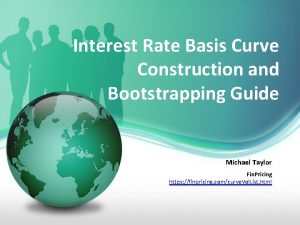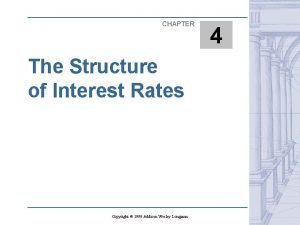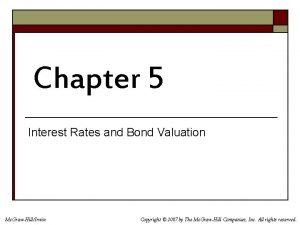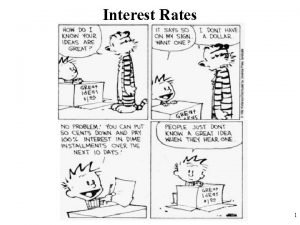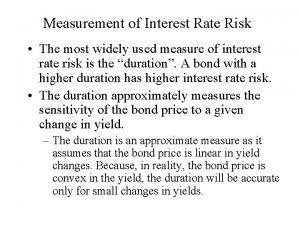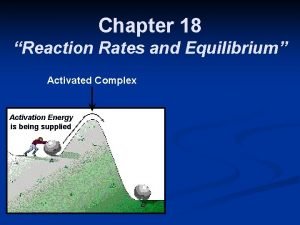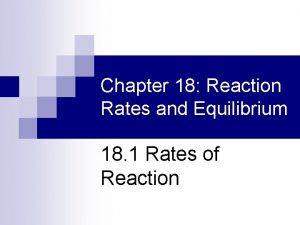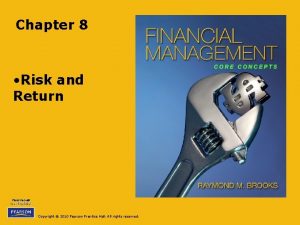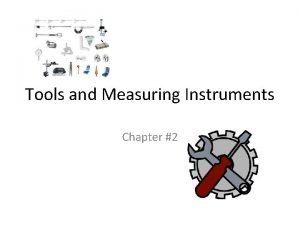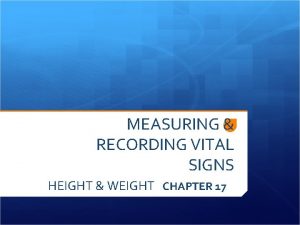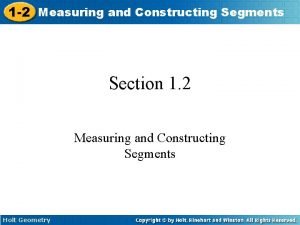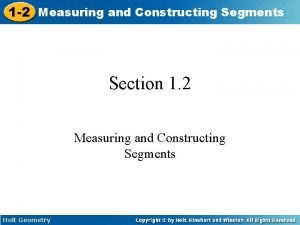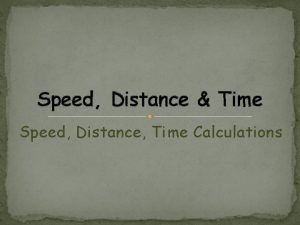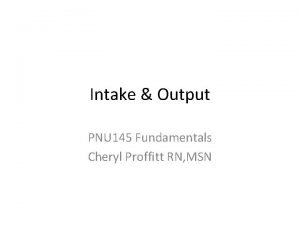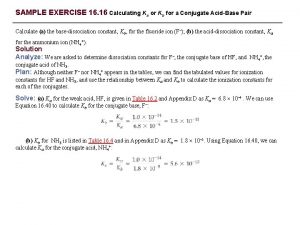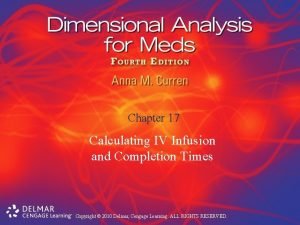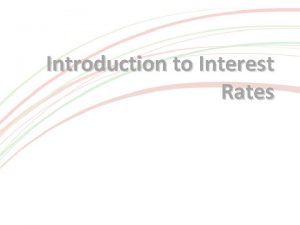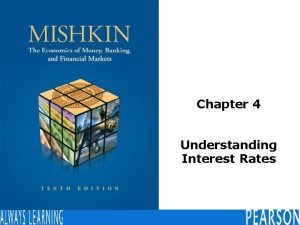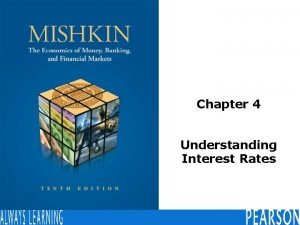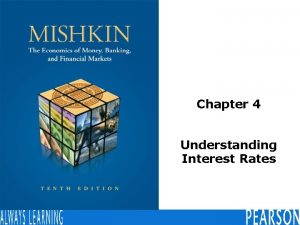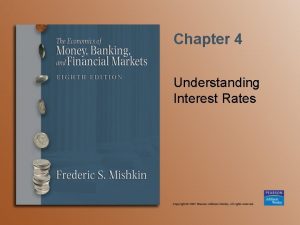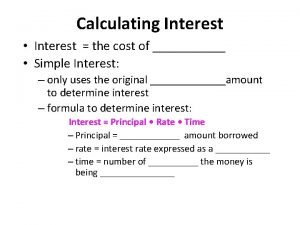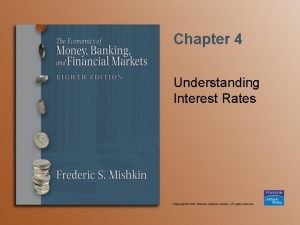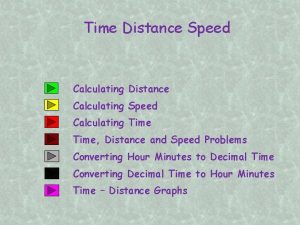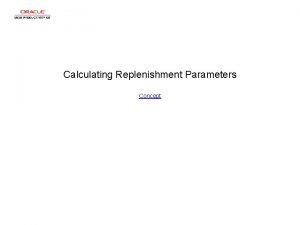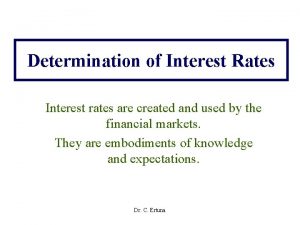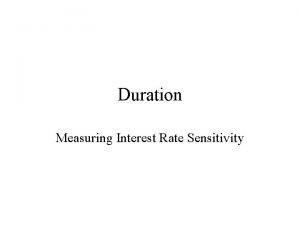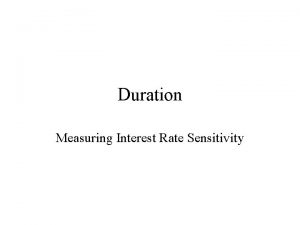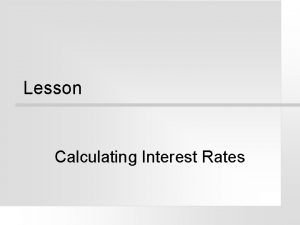Chapter 6 Measuring and Calculating Interest Rates and

















































- Slides: 49


Chapter 6 Measuring and Calculating Interest Rates and Financial Asset Prices Mc. Graw-Hill/Irwin Copyright © 2008 by The Mc. Graw-Hill Companies, Inc. All Rights Reserved.

Learning Objectives ù To learn how money market interest rates are determined, and how those interest rates are used by dealers when trading money market assets. ù To explore the important relationships between the interest rates on bonds and other financial instruments and their market value or price. 6 -3

Learning Objectives ù To look at the many different ways lending institutions calculate interest rates they charge borrowers for loans. ù To determine how interest rates or yields on deposits in banks, credit unions, and other depository institutions are figured. 6 -4

Introduction ù Many different interest-rate measures attached to different types of financial assets have been developed, leading to considerable confusion, especially for small borrowers and savers. ù We will examine the methods most frequently used to measure interest rates and the prices of financial assets in the money and capital markets. 6 -5

Units of Measurement For Interest Rates ù The Interest rate is the price charged to a borrower for the loan of money Interest Fee required by the lender for rate on = the borrower to obtain credit 100 loanable Amount of credit made funds available to the borrower ù Interest rates usually expressed as annualized percentages ù 360 -day and 365 -day years are common ù Compounding terms may also differ 6 -6

Units of Measurement For Interest Rates ù A basis point equals 1/100 of a percentage point. ù Example 10. 5% = 10% + 50 basis points, or 1050 basis points 6 -7

Interest Rates in the Wholesale Money Markets ù Wholesale money market ù Lending for short period of time ù Large sums of money ù Market details in Chapter 10 and 11 ù This chapter ù How interest rates are computed on these assets ù How are interest rates reported in the financial press 6 -8

Computing Interest Rates on Money Market Assets ù Most money market assets have similar characteristics ù Short-term ù Receives no income until asset matures ù At maturity receive par value (face value) ù Must pay less than par to purchase security ù Return is price appreciation ù Assets sold at a discount to par value 6 -9

Computing Interest Rates on Money Market Assets ù Rate of return on money market instrument ù Coupon-equivalent (or bond-equivalent of investment rate) rate of return ù Need three pieces to estimate ù Par value ù Number of days to maturity ù Purchase price 6 -10

Computing Interest Rates on Money Market Assets The formula for the actual annualized rate of return for a single year: Investment rate(IR) 365 = Par value – Purchase price Days to maturity . 6 -11

Computing Interest Rates on Money Market Assets ù In the money market a different rate is quoted ù Bank discount rate (DR) ù Not the actual annualized rate of return ù Used as trading standard ù Easier to estimate than IR ù Use face value in denominator instead of price ù Use 360 rather than 365 days 6 -12

Computing Interest Rates on Money Market Assets ù The formula for the bank discount rate(DR): = Par value – Purchase price Face value 360 Days to maturity. 6 -13

Holding-Period Yield on Money Market Assets ù Financial assets sold at a discount ù Price tends to rise over time ù Price exactly equal to part at maturity ù Prices do not rise at a steady, uniform rate ù Price changes will be impacted by continuous changes in the market interest rates ù If you hold to maturity, you lock in a nominal return ù If you sell early, then price fluctuations impact your investment return 6 -14

Holding-Period Yield on Money Market Assets The holding period yield (HPY) on assets sold at a discount is: HPY = DR at purchase +/- Change in DR over holding period= (Initial days to maturity-Days held)x. Difference in DR Days Held Difference in DR is the change in the CR between when the asset is purchased and when it is sold 6 -15

Interest Rate Quotations on US Treasury Bills ù Treasury bills are money market assets ù Issued by the U. S. government ù Various maturities ù 4 weeks ù 3 months ù 6 months ù Daily report of information on the bills ù Various financial sources ù For each maturity 6 -16

Interest Rate Quotations on US Treasury Bills ù Security dealers who act as “market makers” usually quote two prices ù The higher ask price is the dealer’s selling price ù The lower bid price is the dealer’s buying price ù The difference between the bid and ask prices is the spread – the dealer’s return for creating a market 6 -17

Interest Rates on Bonds and Other Long-Term Debt Securities ù Yield to maturity (YTM) of a financial asset ù The rate of interest that the market is currently prepared to pay for the financial asset ù It is the rate that equates the purchase price (P) with the present value the stream of coupon payments (C) by the asset ù Coupon = Coupon rate * Par value 6 -18

Interest Rates on Bonds and Other Long-Term Debt Securities ù Adjustments for non-annual rates ù Include a parameter k, the number of times during the year that the interest income is paid to the investor 6 -19

Measures of the Rate of Return (Yield) On a Financial Asset ù The holding-period yield is an investment rate of return ù Over its actual or planned holding period ù It is the discount rate (h) equalizing the purchase price (P) of a financial asset with all the discounted annual payments (C) received until the asset is sold at time m for price Pm 6 -20

Understanding Yield to Maturity Example A 5 -year corporate bond has a face value of $1, 000. Its promised a annual coupon rate is 10% and it pays $50 in interest every 6 months. The bond is currently selling for $900 6 -21

Price Quotations on U. S. Treasury Notes and Bonds ù U. S. Treasury notes (T-notes) and U. S. Treasury bond (T-bonds) ù Original maturities of 2 years to 30 years ù Most are fixed payments ù Typically semi-annually ù Need to know ù Price and maturity ù Date coupons paid ù Amount of coupon payments ù Current yield to maturity 6 -22

Price Quotations on U. S. Treasury Notes and Bonds ù The current yield of a financial asset is the ratio of the annual income (dividends or interest) generated by the asset to its market value. Example The current yield of a share of common stock selling for $30 in the market and paying an annual dividend of $3 to the shareholder is $3/$30 = 0. 10, or 10% 6 -23

Price Quotations on U. S. Treasury Notes and Bonds ù Characteristics ù Price quotes are on $100 of par value ù Quoted in 32 nd of a dollar ù Annualized rate ù Price quotations provided in financial press ù Including daily trading activity ù Often including bid and asked prices 6 -24

Price Quotations on Corporate Bonds ù Price quotes on corporate bonds are similar ù Same basic information required ù However the need to consider risk ù Unlike what is assumed for the US government, some borrowers may default on all or a portion of their promised payments ù The market value of the risky asset may rise or fall ù Investors require greater returns to compensate them for this risk 6 -25

Yield-Asset Price Relationships ù The price of a financial asset (especially debt securities) and its rate of return are inversely related ù A rise in yield implies a decline in price, and vice versa ù Investing funds in financial assets can be viewed from two different perspectives ù The borrowing and lending of money ù The buying and selling of financial assets 6 -26

Yield-Asset Price Relationships Equilibrium Asset Prices and Interest Rates (Yields) Interest-Rate Determination Interest Demand Rate (borrowing) i. E LFE Asset Price Determination Price Supply (lending) Loanable Funds PE Demand (lending) Supply (borrowing) FAE Assets 6 -27

Rates of Return on Perpetual Financial Instruments ù Some financial instruments never mature ù Perpetuity financial instruments ù May be fixed-income ù Equal payments to its holder every year ù Ad infinitum ù May be variable-return ù Corporate stock ù Future payments may change over time 6 -28

Rates of Return on Perpetual Financial Instruments Perpetuity rate Annual rate of return on a perpetual financial instrument = Annual cash flow promised current price or present value. Or Current Price =Annual cash flow promised Annual rate of return . 6 -29

Rates of Return on Perpetual Financial Instruments ù Key points to consider ù An infinite stream of cash flows has a finite value ù There is an inverse relationship between the current price and the rate of return ù This can be weaker than for bonds ù It does not always hold for common stock 6 -30

Rates of Return on Perpetual Financial Instruments ù Stock pricing formula ù D 0 is current dividend ù EDi is expected future dividend at time I ù R is the minimum rate of return required by a company’s shareholders ù SP is the company’s stock price 6 -31

Rates of Return on Perpetual Financial Instruments ù This simplifies to 6 -32

Yield-Asset Price Relationships demand for loanable funds supply of securities Interest-Rate Determination Interest Rate D’ Asset Price Determination Price D S S’ Loanable Funds Assets 6 -33

Yield-Asset Price Relationships supply of loanable funds demand for securities Interest-Rate Determination Interest Rate Asset Price Determination D’ Price D S S’ Loanable Funds Assets 6 -34

Price Quotation in Corporate Stocks ù There are many professional analysts examining stocks. They can provide information by trading stocks ù Closing price is price at end of prior trading day ù How much the stock price has changed ù Compare to prior year’s high and low ù Determine if the stock pays a dividend and how much ù Price to earnings ratio 6 -35

Interest Rates Charged or Paid by Institutional Lenders ù Simple interest method ù Assesses interest charges on a loan only for the period of time that the borrower has actual use of the borrowed funds Interest = principal rate term ù The more frequently a borrower makes repayments on a loan, the less the total interest 6 -36

Interest Rates Charged or Paid by Institutional Lenders ù Add-on interest method ù Interest is calculated on the full loan principal ù The sum of interest and principal payments is divided by the number of payments to determine the dollar amount of each payment ù In a single payment loan, the simple interest and add-on methods give the same interest rate ù As the number of installment payments increases, the borrower pays a higher effective rate under the add-on method 6 -37

Interest Rates Charged or Paid by Institutional Lenders ù Discount loan method ù Determines the total interest charged to the customer on the basis of the amount to be repaid ù Loan proceeds are only the difference between the total amount owed and the interest bill ù Hence, the effective interest rate is Interest paid 100 Net loan proceeds 6 -38

Interest Rates Charged or Paid by Institutional Lenders ù Monthly payments of a home mortgage loan ù First covers in full the monthly interest on the outstanding principal ù The remainder is then applied to the principal of the loan where L = total amount owed r = annual loan interest rate t = number of years of the loan 6 -39

Annual Percentage Rate ù The U. S. Consumer Credit Protection Act of 1968 (Truth in Lending) ù Requires lending institutions to calculate and tell the borrower the annual percentage rate (APR) ù Rate borrower actually pays ù APR measures the yearly cost of credit ù Interest costs ù Transaction fees or service charges imposed by the lender 6 -40

Compound Interest The compounding of interest means that the lender or depositor earns interest income on both the principal and accumulated interest The formula for calculating the future value of a financial asset earning compound interest is: FV = future value of the asset P = principal value of the asset r = annual interest rate m = annual compounding frequency t = term of the asset in years 6 -41

APY on Deposits The U. S. Truth in Savings Act of 1991 ù Requires depository institutions to use the daily average balance in a customer’s deposit ù Over each interest-crediting period ù To determine the customer’s annual percentage yield (APY) for that deposit account where i = interest earned b = daily average balance d = term in days 6 -42

Markets on the Net ù Bankrate. com at www. bankrate. com ù CNN Money at money. cnn. com/pf/banking ù Compare Interest Rates at www. compareinterestrates. com ù Credit Card Analyzer at www. creditcardanalyzer. com ù Federal Reserve System at www. federalreserve. gov 6 -43

Markets on the Net ù Fin. Aid at www. finaid. org ù Financial Power Tools at www. financialpowertools. com ù Interest Rate Calculator at www. interestratecalculator. com ù Investopedia at www. investopedia. com/calculator ù Lenders. Compete. com at lenderscompete. com 6 -44

Markets on the Net ùLocal Bank Rates on Loans and Savings at www. digitalcity. com ùMortgage Professor’s Web Site at mtgprofessor. com 6 -45

Chapter Review ù Introduction ù Units of measurement for interest rates and asset prices ù Calculating and quoting interest rates ù Basis points ù Prices of stocks and bonds 6 -46

Chapter Review ù Measures of the rate of return, or yield, on a loan, security, or other financial asset ù Rate of return on a perpetual financial instrument ù Coupon rate ù Current yield ù Yield to maturity ù Holding-period yield ù Bank discount rate 6 -47

Chapter Review ù Yield-asset price relationships ù Interest rates and the prices of debt securities ù Interest rates and stock prices 6 -48

Chapter Review ù Interest rates charged by institutional lenders ù Simple interest rate ù Add-on rate of interest ù Discount loan method ù Home mortgage interest rate ù Annual Percentage Rate (APR) ù Compound interest ù Annual Percentage Yield (APY) on deposits 6 -49
 Chapter 7 interest rates and bond valuation
Chapter 7 interest rates and bond valuation Your uncle would like to restrict his interest rate risk
Your uncle would like to restrict his interest rate risk Chapter 6 interest rates and bond valuation
Chapter 6 interest rates and bond valuation Chapter 7 interest rates and bond valuation
Chapter 7 interest rates and bond valuation Chapter 6 interest rates and bond valuation
Chapter 6 interest rates and bond valuation Iv fluid calculation microdrops
Iv fluid calculation microdrops Gtt per min formula
Gtt per min formula What is a unit ratio
What is a unit ratio Equivalent ratios
Equivalent ratios Ratios rates and unit rates
Ratios rates and unit rates Ratios rates and unit rates
Ratios rates and unit rates Compounded daily formula
Compounded daily formula Calculate time interest earned
Calculate time interest earned Algorithm for calculating simple interest
Algorithm for calculating simple interest Interest rates and economic growth
Interest rates and economic growth Increase money supply
Increase money supply Interest rates and price level
Interest rates and price level Monetary and fiscal policy interactions activity 5-5
Monetary and fiscal policy interactions activity 5-5 Financial risk definition
Financial risk definition Interest rate quotes
Interest rate quotes Effective versus nominal interest rates
Effective versus nominal interest rates Determinants of interest rates
Determinants of interest rates Unit 2 lesson 12 interest rates
Unit 2 lesson 12 interest rates What is real interest rate and nominal interest rate
What is real interest rate and nominal interest rate Interest rates
Interest rates Interest rate curve construction
Interest rate curve construction Interest rates
Interest rates Interest rates
Interest rates Rise in interest rates effects
Rise in interest rates effects Simple interest
Simple interest Measurement of interest
Measurement of interest Chapter 18 review chemical equilibrium section 3 answer key
Chapter 18 review chemical equilibrium section 3 answer key Chapter 18 reaction rates and equilibrium answer key
Chapter 18 reaction rates and equilibrium answer key Chapter 18 reaction rates and equilibrium
Chapter 18 reaction rates and equilibrium Chapter 8 risk and rates of return problem solutions
Chapter 8 risk and rates of return problem solutions Tpr graphic sheet
Tpr graphic sheet Chapter 2 tools and measuring instruments
Chapter 2 tools and measuring instruments Chapter 16:2 measuring and recording temperature
Chapter 16:2 measuring and recording temperature Chapter 16:7 measuring and recording blood pressure
Chapter 16:7 measuring and recording blood pressure Chapter 15:1 measuring and recording vital signs
Chapter 15:1 measuring and recording vital signs Chapter 21:1 measuring/recording height and weight
Chapter 21:1 measuring/recording height and weight Chapter 15:1 measuring and recording vital signs
Chapter 15:1 measuring and recording vital signs 1-2 measuring and constructing segments
1-2 measuring and constructing segments 1-2 measuring and constructing segments
1-2 measuring and constructing segments Speed time distance formula
Speed time distance formula Distance is speed over time
Distance is speed over time Speed distance triangle
Speed distance triangle Intake output calculation
Intake output calculation Kb from ka
Kb from ka Calculating iv infusion rate
Calculating iv infusion rate


